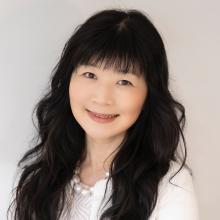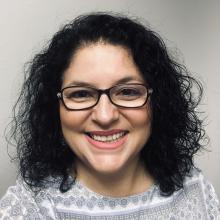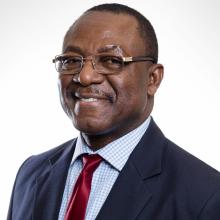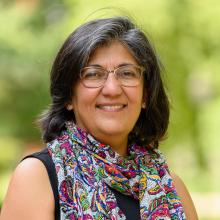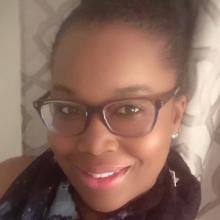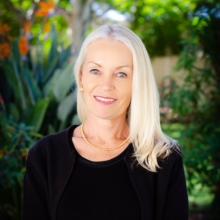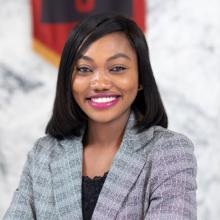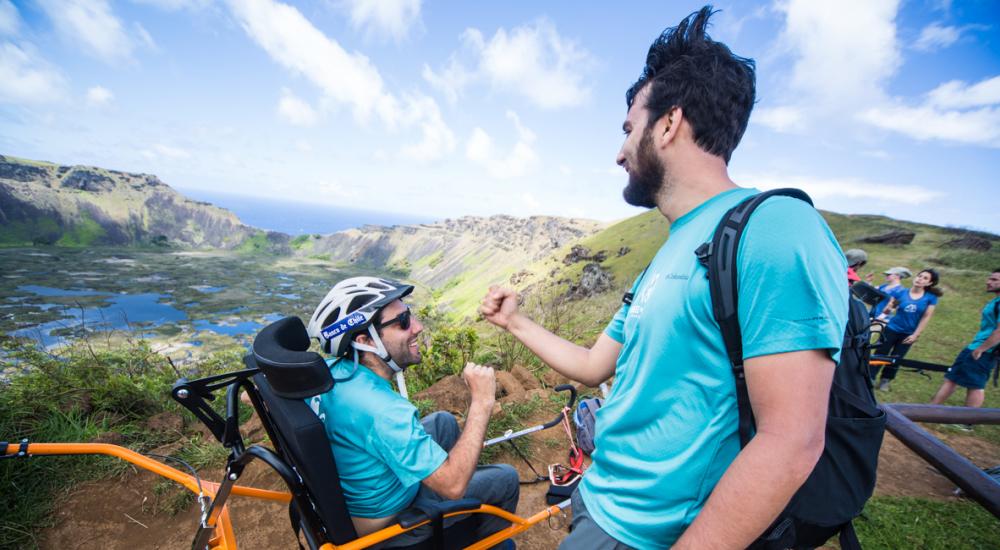Full Circle: From International Student to International Educator
For many former international students working as professionals in international education, it was their own experience abroad that launched them on a career trajectory in global education. Those who had a positive experience studying in the United States want to create the same opportunities for current international students; others draw on challenges they faced as students to make studying in another country just a little easier for other newcomers.
Charlotte West spoke to seven former international students who found their passion for international education due to their time as a student in the United States. These international educators bring a unique perspective to the profession by being able to put themselves in their students’ shoes. A few of the pieces of advice they offer their international students: embrace opportunities, step out of your comfort zone, and don’t afraid to ask questions.
Lin Reed, China
- Undergraduate exchange and MS in counseling psychology, Northern State University
- Executive director, Queens College Global Student Success Program, Navitas
What was your experience like as an international student in the United States?
I would describe it as an experience that’s filled with friendship, inspiration, and empowerment. It was all about exploration, in a way, because I started my journey in the United States as an undergrad exchange [student] in my junior year. I later became a graduate student in the United States as well. I was the founder and the first president of the international student club. And also, I was the columnist for the school paper, and I became the first international student who served as a resident assistant in the dorms. Through all those activities and encounters, I found friendship, and I was really inspired by the university leaders, instructors, and even fellow students. I felt empowered and prepared for the next level of my studies and career.
How does your own experience as an international student inform your day-to-day work?
The biggest impact is that I realized the value of higher education beyond the classroom. Through curriculum, student leadership, networking, and part-time jobs, I collected those experiences. I realized that students can really open their eyes and see new opportunities and options. Throughout my career, my focus has been to build a platform for international students, and many times for domestic students, to explore their possibilities and [to foster the] exchange of culture and ideas, so that they can expand their future possibilities through friendship and professional networking.
When you’re working with international students, what kind of advice do you give them?
One thing that’s formed my foundation of working strategy is career imagination. I want all students to start career imagination at an earlier stage, rather than waiting until junior and senior years. I often tell my students, “When you’re alone, close your eyes and imagine yourself in five years and 10 years from now. Where are you? Who are you with? What’s your typical working day look like?” With career and life imagination, students will really have a clear goal and direction they can work towards rather than “I’m here just to get a degree.” I want them to think about the possibilities and also link their current focus with their future career, [asking themselves] “What skills and knowledge do I need? And what network do I need?”
Telba Espinoza-Contreras, Mexico
- Undergraduate exchange student, Appalachian State University; MA in Hispanic studies and PhD in comparative literature, Louisiana State University
- Director, International Student Resource Center and Study Abroad, Northwestern State University
Can you talk a little bit about how your own experience as an international student informs the way you work?
My own experience as an international student here in different times of my life helps me to be better prepared to put myself in their shoes when [international students] come here and [to] be familiar with their feelings, with their expectations, with what they’re going through—just the logistics of the process—having gone through that myself. And to know the feelings associated with that process, just making the decision to come here, going through all the visa process, [filling out] the application and everything. [I] just try to be a translator of the cultural experience and what they might expect, how to prepare, and what they go through when they get here.
What would you say drives you to do this work?
I think just being the facilitator for the students to come here and take advantage of any opportunities, that helps me every day. I’m part of the process of them improving their lives by coming here to expand their life experiences. And just helping every day also to make those connections between different cultures and how we maybe help the world to be a little bit better when we understand each other when we get closer to what’s different from us.
What’s next for you in terms of what you’re hoping to do in your career in international education?
This is my first full-time job in international education. So, it’s been, of course, a learning curve, but I’ve been working in this field professionally since 2016. I am a one-person office, so I have to manage different aspects of international education myself. So, my hope is to grow into an opportunity that allows me to oversee and not to manage everything at the same time. It’s hard to work on the bigger projects or think of bigger projects when you have to manage everything yourself on a day-to-day basis.
Godlove Fonjweng, Cameroon
- BS in geochemistry, Swarthmore College; MS and PhD in geology, University of Pennsylvania
- Executive director of international programs, Prairie View A&M University
Can you tell me a little bit about your own experience as an international student?
I came as an undergraduate and then went on to do my master’s and PhD and then entered the workforce. My experience as an international student is very similar to what international students experience these days. They are under a lot of pressure to cope with a lot of things—many of them cultural, some simply financial. And I faced similar challenges. And eventually, over time, you get used to some of them, but you never really get used to all of them, especially if you’re born somewhere and grow up in that culture. It’s a lifelong learning process.
Can you talk a little bit about how you got involved with international education as an educator and sort of what drives you to do the work that you’re doing today?
I started out as a faculty member. I taught geology, environmental science, and environmental chemistry for many years. Before that, while I was in grad school at the University of Pennsylvania, there was a program there with the university museum in which they brought speakers from different parts of the world to talk to a group of high school students from New Jersey and Pennsylvania. And somebody found that I played percussion instruments and asked me if I could come talk about music in Cameroon, which I did. And I really enjoyed my time with the students.
So, when I graduated, I started my first job as a faculty member. One of the committees I served on was study abroad. And serving on that committee, I saw the true relevance of that work in the kind of advice I was giving students and faculty. It just came naturally to me compared to my American colleagues who were on the committee.
[And in my current position], I still get to teach. I’m about to go with a colleague to teach a course in the Galapagos Islands. So, I [can still] apply my geology and environmental science knowledge. And I also have enough experience that I’m able to work with faculty to help them through mentoring them in study abroad.
What’s next for you in terms of your international education career?
I think everything that I really want to do, I’m having it here, in the sense that I’m working with a community that doesn’t have strong experience in this field. There are many ways to advance the field. In addition to being able to help students, you can also work with faculty to enhance the curriculum, which is something that I am also happy to have—a quality enhancement plan that is designed to enhance our curriculum. It’s one of those things that has very strong staying power. Taking students abroad is good, but it’s very limited, because only a small fraction will ever go. So, I’m engaged in things that are going to help our students get that experience, even if [it’s not] while they’re students. For example, we have a brand-new Peace Corps preparation program. And that is another angle that not only works with getting students prepared now but even beyond school, they’re going to get engaged with international affairs.
Roopa Rawjee, India
- Master’s in curriculum and instruction, California State University-Northridge; EdD in educational leadership and administration, California Lutheran University
- Executive director, Office of International Engagement, Illinois State University
Can you tell me a little bit about your own experience as an international student in the United States?
I came in 1998 to the United States as an international student in California. I had 12 years of experience as a high school teacher in Mumbai, India. I came because of a personal situation, and the way for me to change my life was to come here as an international student. Because our degrees don’t necessarily translate, I needed to start my career again. So, I enrolled in a master’s degree program in curriculum and instruction. And I needed to get the California teaching credential. So that was my introduction to life at Cal State Northridge. And when I shared my story and spoke at an international student orientation, I was immediately offered a job in the international office to coordinate cocurricular programs for international students.
Being a teacher, I was already observing how orientation was being delivered. It was very centered on [domestic] undergraduate students. I immediately started connecting the dots and saw the need to provide better services to international students.
Can you elaborate on how having that international experience yourself has informed the way that you approach your job today?
Even though California is a very diverse state, I suddenly was identified as a person of color. From the Indian subcontinent—India, Pakistan, Sri Lanka, Bangladesh—we are all considered Desi. But suddenly, I had a national identity that I had not really thought about. And so, I think for me, it involved a lot of self-work. It involved a lot of thinking about what my identity now had become. What did my identity mean? What does it feel like to be an international student in a country where one is no longer amongst the comfort of one’s own home, one’s own culture, one’s own mental framework? And what does that do to the student’s success? This isn’t all about the classroom—in order to be successful in the classroom, students should feel comfortable outside of the classroom. And so, it shaped my commitment to the work of diversity, equity, and inclusion, [and creating a] sense of belonging. It was from my own gut-wrenching experiences.
It became really important for me to provide thoughtful, intentional experiences for international students, so that they would be better prepared to succeed in the classroom. And I take great pride in being that thoughtful leader but also coming from a place of humility, coming from a place of vulnerability, where I talk about my own journey, my own mistakes, my own challenges, some pieces of privilege and others where I’m not privileged by my own identity, and helping students see that there is a light at the end of that tunnel.
What advice do you share with international students?
I say this all the time: My best friend is from Lebanon. She and I go back to 1998. I met her at orientation. She was my international student mentor and has become a very dear friend. I actually met my husband through her. And so, my advice to students is, “Yes, it’s comfortable to stick with people who speak your own language. Yes, it’s comfortable to eat your own food because you miss home. But also open your hearts and your minds to all the cultures that are right here in our little microcosm at the university.”
Patriece Campbell-Palmer, Jamaica
- BA in organizational communication and international studies and MPA, University of Michigan-Flint; EdD in transformational leadership, University of New England
- Director of graduate admissions and enrollment management, University of Louisville
Can you talk a little bit about your own experience as an international student?
I arrived in this country from Jamaica, a small-town girl, at 17. In Michigan, initially, I was at a small, private institution where I realized that it wasn’t the best fit. I used to tell people that growing up and seeing college in the United States on TV, I had an idea of what I expected college should look like and feel like, and I wanted to go seek that out. But my parents had very strong parameters; [for instance,] I had to stay in Michigan because my brother was already there. And I loved the University of Michigan’s campus because I’d been there, but being from Jamaica, I was thinking, “That’s a lot of people.” So, I realized that there were two other campuses and decided to go to the University of Michigan-Flint, where the admissions person at the time was amazing. I really felt like I was heard, and I didn’t feel that way at other schools that I had looked into. So, I tell people that I applied and I attended a school just based on how someone made me feel. And I did an undergraduate degree, as well as a graduate degree, from the University of Michigan-Flint.
I was one of 20 [international] students. And I was able to help them figure out how to have international students on campus because I used to ask, “Why don’t we do this? Or how come? Or why do we have double tuition?” I had questions that no one had asked before. And because of that, I was able to be a part of building out what now is the Center for Global Studies. [The university] turned an aspiring engineer to a higher ed leader.
How does being both an international undergraduate and graduate student impact the way you do your work?
When I think about my role and how it impacts international students, I think about two things. [First,] I think about the fact that I’m able to meet them where they are. I can use my own experience to share with them that it is normal to feel this way, and here are the ways that you’re able to overcome. Here are the people that you need to be in contact with.
And one of my favorite parts of the experience is orientation, where I tell students that I was a former international student. And I’ve always told them that my goal is for them to have at least one-tenth of the experience that I’ve had.
And [second,] I always let them know that my office is an open office, if they need to just sit, if they’re missing home. They always know that my office is a space that they can just be without needing anything. I know how I wanted to feel, being so far away from home. Something that I do on a daily basis is to make sure they know that I can be home for them if they need.
What do you think are the biggest challenges in the field of international education right now?
I was just talking to someone about mental health. And [for] international students, it’s still something that’s so taboo. Oftentimes so much of our mental-health activities on campuses are focused on the undergraduate level, because graduate students should have it all figured out. It’s important for us to figure out a digestible way to talk about what mental health looks like. It’s so complicated. I’ve had quite a few students over the past few months, where, at the end of the day, I’m talking to them and then say, “This is something that we need to address. Yes, you might be ashamed. But let’s take this on, so that you’re able to get to that self-actualization.” I think one of the biggest challenges that I’m seeing is the fact that students aren’t transitioning well; they’re not finding their space on campus. They assume that it’s just about completing the academic work, and they don’t realize how important it is to take care of the whole self.
Carola Smith, Germany
- MA in literature, University of California-Santa Barbara
- Vice president, School of Extended Learning, Santa Barbara City College
Can you tell me a little bit about your own experience as an international student here in the United States?
I came to the United States from Germany. I grew up in an education system that I would describe as very rigid at the time. My parents predetermined when I was about 9 years old whether I would go to college or not. Parents had to send students to different educational tracks, either vocational or academic. And it was very difficult to move between tracks, and there was also very little interaction among students in between these tracks. So, when I attended Santa Barbara City College as an international student, I was stunned immediately by the diversity of the student population. I really fell in love with that system. For me, that was what made me decide to actually go into higher education.
At the time, I was in law school in Germany and had no intention of becoming an educator. But I realized that education is such a powerful equalizer and that education provides tremendous opportunity for upward mobility for students. And so that, to me, was incredibly meaningful. My international experience ended up prompting me to make a career change.
What do you think are the biggest challenges right now in the field of international education, particularly at community colleges?
I think one challenge has always been, especially at the community college [level], that international education may still be considered as an add-on rather than a core component of education. Oftentimes at community colleges, you hear the argument that we should be serving the local community. We have these ongoing discussions with our community about whether we should have this many international students or whether they are taking away seats from our local students. So, I think that it has to be an ongoing education, raising awareness of the benefits of international education. And at the community college system [level], international education oftentimes tends to be one of the first programs that is cut in budget crises. I’m fortunate that at Santa Barbara City College, we have had a long-standing commitment [to international education], and for us, international education is a core component of what we do. But that is not the norm among community colleges.
What do you find most rewarding about your work at Santa Barbara City College?
I find most rewarding [the chance] to be able to provide the opportunity to have an international experience to traditionally underserved student populations. We have done a lot of outreach to our extended opportunities program students. We work very closely with our transition students—those are our formerly incarcerated students. And we do a lot of outreach and education to those student populations to let them know that study abroad is within their reach. We have actually been recognized as one of the top-producing Gilman scholar institutions. That’s also why I love working in the community college setting, because you have the opportunity to make these incredible learning experiences accessible to students who normally would think that that is not for them.
Anastasia Fynn, Ghana
- MBA, Strayer University
- Director, International Student and Scholar Services, University of Utah
How did you end up in the United States?
While I did not come to the United States as your traditional F-1 student, I did come as a green-card holder. [But] when I applied to graduate school, I was still considered an international student, with all the nuances that come with it—feeling lost in terms of where do I go, who do I talk to, teaching methods, [everything] being very unfamiliar.
I always tell students that you will feel lost, but ask questions. Because [in] the educational system that I was used to growing up in Ghana, you just listen to what you’re told, and then, at the end of the academic year, a term, you reproduce what has been told to you. And so over here, that’s seen as a student that lacks engagement. Being an international student means you have to ask questions. You have to let people know how you feel about situations so they can best assist you. It helps having lived those experiences to let students know if you ask questions, you probably get the help that you need.
What advice do you give your colleagues who might not have had that experience as an international student themselves?
For most international students, they remember how you made them feel, not necessarily the answer that you gave them. So, you could be saying no, but the empathy with which you‘re saying the no is what they would remember. Even if it‘s an email, I’m always careful on message delivery to international students in that I want to make them feel …as welcome as possible so that they can come back to me when they have issues. I always tell my colleagues my philosophy for working with international students is I always want to get to a yes, within the confines or within the allowances of the regulation. If it allows me to be flexible enough to get to a yes, I‘ll get to that yes. •
About International Educator
International Educator is NAFSA’s flagship publication and has been published continually since 1990. As a record of the association and the field of international education, IE includes articles on a variety of topics, trends, and issues facing NAFSA members and their work.
From in-depth features to interviews with thought leaders and columns tailored to NAFSA’s knowledge communities, IE provides must-read context and analysis to those working around the globe to advance international education and exchange.
About NAFSA
NAFSA: Association of International Educators is the world's largest nonprofit association dedicated to international education and exchange. NAFSA serves the needs of more than 10,000 members and international educators worldwide at more than 3,500 institutions, in over 150 countries.
NAFSA membership provides you with unmatched access to best-in-class programs, critical updates, and resources to professionalize your practice. Members gain unrivaled opportunities to partner with experienced international education leaders.


